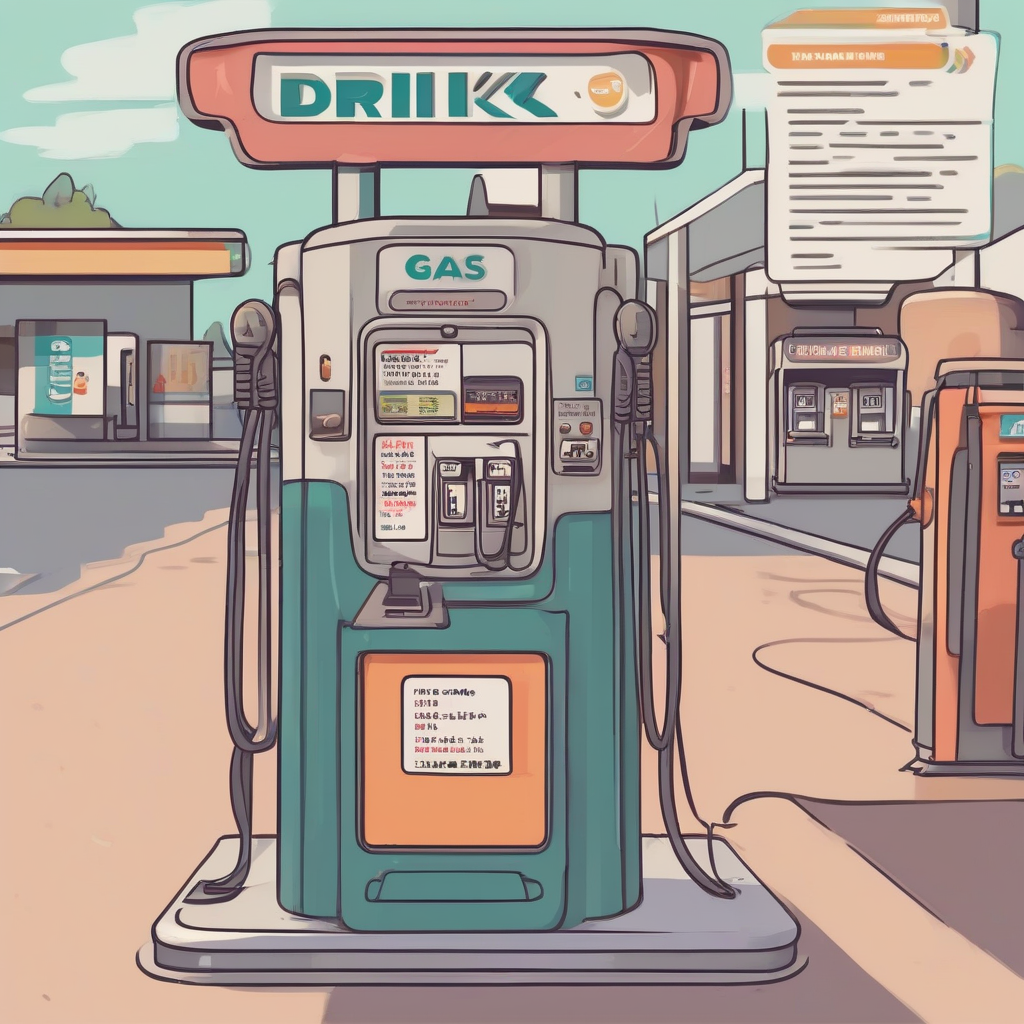Beyond the Pump: A Deep Dive into the World of Gas Station Drinks
Gas stations. The ubiquitous roadside stops, offering more than just fuel. They’re a microcosm of American culture, a place where the mundane meets the unexpected, and a surprisingly diverse landscape of refreshment options awaits the thirsty traveler. This exploration delves into the fascinating world of gas station drinks, examining their history, variety, cultural significance, and the sometimes-surprising choices available.
A Brief History: From Soda Fountains to Slurpees
The evolution of gas station beverages mirrors the evolution of the gas station itself. Early gas stations, often small, family-run operations, might have offered little more than water. As automobiles became more prevalent and road trips common, the demand for convenient refreshments grew. This led to the incorporation of soda fountains, initially offering simple cola and other carbonated drinks. The introduction of refrigeration technology revolutionized the industry, allowing for a wider range of chilled beverages.
The mid-20th century saw the rise of iconic gas station drinks, many of which are still staples today. The Slurpee, with its icy texture and vibrant colors, quickly became a symbol of summer fun. Energy drinks, initially marketed towards athletes and those needing a quick boost, entered the market and gained massive popularity, becoming a major segment of gas station sales. The convenience factor, coupled with the expanding range of options, solidified the gas station’s place as a crucial source of on-the-go hydration and refreshment.
The Diverse Landscape: A Spectrum of Choices
The range of drinks available at your average gas station is astounding. From the classic cola and other sodas to more niche selections, the options cater to a wide variety of tastes and preferences.
Carbonated Beverages:
- Cola: The undisputed king, with various brands and flavors competing for shelf space.
- Other Sodas: A vast array of flavors, from orange and lemon-lime to more unusual creations.
- Flavored Sparkling Waters: A healthier alternative offering a fizzy refreshment without the sugar.
Non-Carbonated Drinks:
- Iced Tea: Sweetened and unsweetened versions are common, often in a variety of flavors like peach or lemon.
- Lemonade: A refreshing classic, either freshly squeezed or from a concentrate.
- Juice: From apple to orange to more exotic blends, providing a vitamin boost on the go.
- Bottled Water: Still and sparkling options, catering to different hydration needs.
- Sports Drinks: Electrolyte-enhanced beverages aimed at replenishing fluids and minerals lost through sweat.
- Milk & Dairy Alternatives: An increasingly common offering, reflecting growing dietary preferences.
- Coffee: Pre-brewed coffee in bottles or cans is becoming increasingly popular.
Frozen Beverages:
- Slurpees: The iconic icy treat, available in a multitude of vibrant colors and flavors.
- Frozen Coffee: A chilled caffeine fix for the summer months.
- Frozen Lemonade/Iced Tea: Provides a cool and refreshing alternative to their non-frozen counterparts.
Energy Drinks:
- High-Caffeine Beverages: Offering a significant energy boost, often containing added sugars, taurine, and other stimulants.
- Low-Sugar Alternatives: Catering to health-conscious consumers, these versions still provide an energy kick but with less sugar.
The Cultural Significance of Gas Station Drinks
Gas station drinks are more than just beverages; they represent a significant part of American culture and consumerism. They’re frequently associated with road trips, long drives, and spontaneous adventures. The iconic Slurpee, for example, is synonymous with summer fun and carefree moments.
The convenience factor plays a crucial role in their popularity. They are readily available, accessible at all hours, and provide a quick and easy way to quench one’s thirst or get a caffeine fix. This makes them a key part of the fast-paced American lifestyle.
Gas stations often cater to local tastes and preferences. The specific selection of drinks offered at a gas station may reflect the surrounding community’s cultural influences, adding another layer of local character.
Beyond the Familiar: Unexpected Finds
While many gas stations offer similar selections, some are known for stocking more unique or surprising beverages. These unexpected finds add to the adventure and discovery aspect of stopping at a gas station.
- Regional Specialties: Certain regions might offer locally produced sodas, juices, or other drinks not found elsewhere.
- Imported Drinks: Some gas stations carry a selection of imported beverages, giving customers access to a global range of flavors.
- Craft Sodas: The rise of craft brewing has extended to the soda market, with some gas stations stocking unique and artisanal soda brands.
- Specialty Coffees: Beyond simple pre-brewed coffee, some locations might offer gourmet coffee options or even espresso drinks.
Health Considerations and Ethical Concerns
While gas station drinks provide convenience and refreshment, it’s crucial to be mindful of their nutritional content. Many contain high levels of sugar, artificial sweeteners, and caffeine. Overconsumption can lead to health problems such as weight gain, type 2 diabetes, and dental issues.
Furthermore, some ethical concerns exist regarding the production and sourcing of certain gas station beverages. The use of unsustainable agricultural practices or labor exploitation in the supply chain warrants attention. Consumers should be aware of these issues and consider purchasing drinks from brands committed to ethical and sustainable practices.
The Future of Gas Station Drinks
The landscape of gas station drinks is constantly evolving. Growing health consciousness is driving a demand for healthier alternatives, leading to an increase in low-sugar and organic options. The rise of plant-based diets is also impacting the selection of milk and dairy alternatives.
Innovation remains a key factor, with new flavors, formats, and beverage types continually emerging. Expect to see more creative and exciting beverage choices in gas stations in the future, alongside further emphasis on ethical sourcing and sustainable practices.
Conclusion (Omitted as per instructions)
